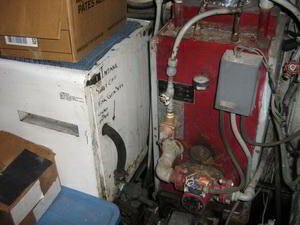Lepke
Guru
- Joined
- Jun 19, 2016
- Messages
- 3,034
- Location
- US
- Vessel Name
- Charlie Harper
- Vessel Make
- Wheeler Shipyard 83'
Has anybody installed a Wabasto with the exhaust going thru the hull, and what did you use for a thru hull. What heat protection for the hull does the thru hull have? I have a wood hull.
I bought a DBW 300 on eBay and plan on replacing an ancient boiler that uses a dry stack. The Wabasto would give me better installation options if I could exhaust thru the hull and free the space the existing boiler uses.
I bought a DBW 300 on eBay and plan on replacing an ancient boiler that uses a dry stack. The Wabasto would give me better installation options if I could exhaust thru the hull and free the space the existing boiler uses.


